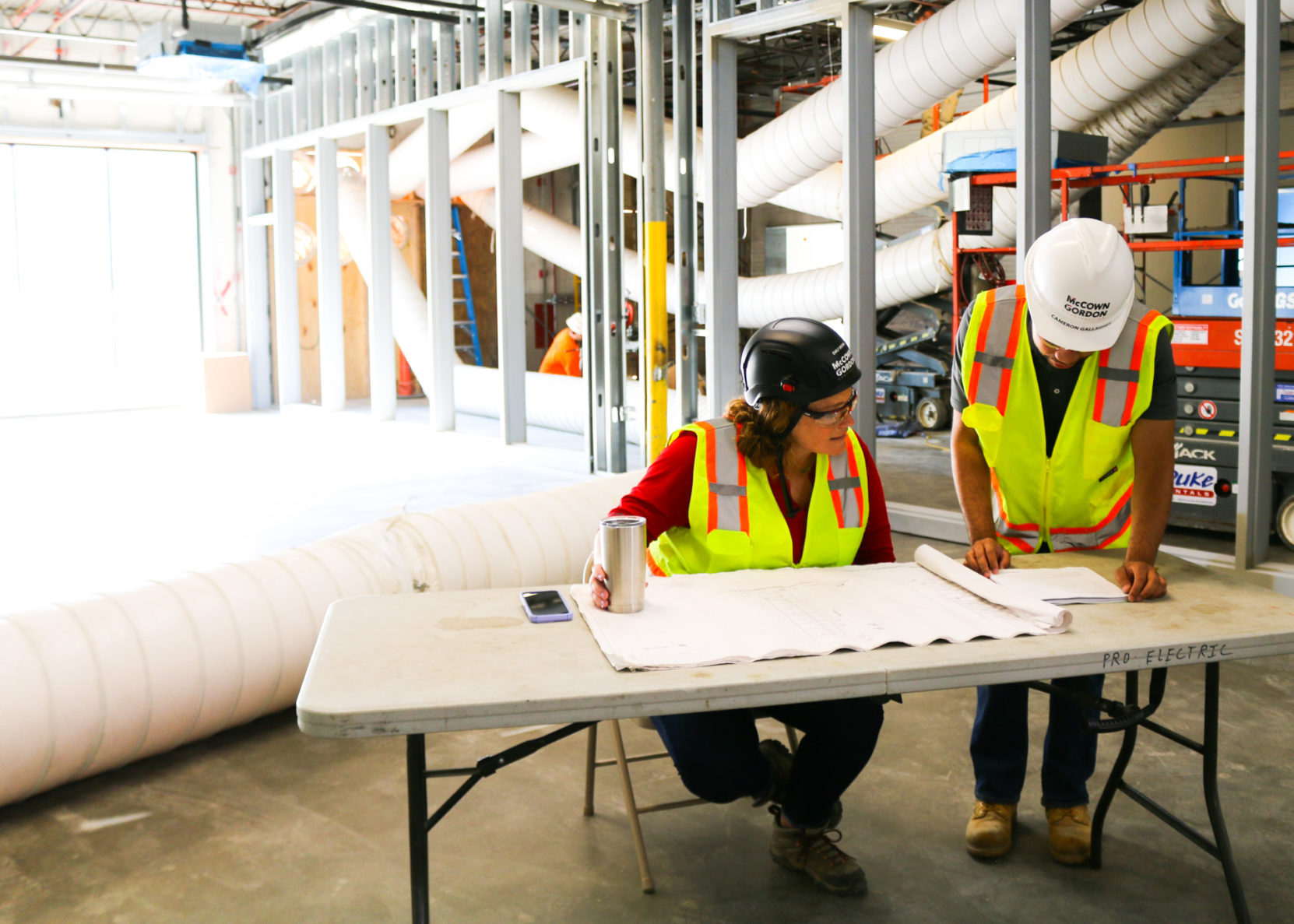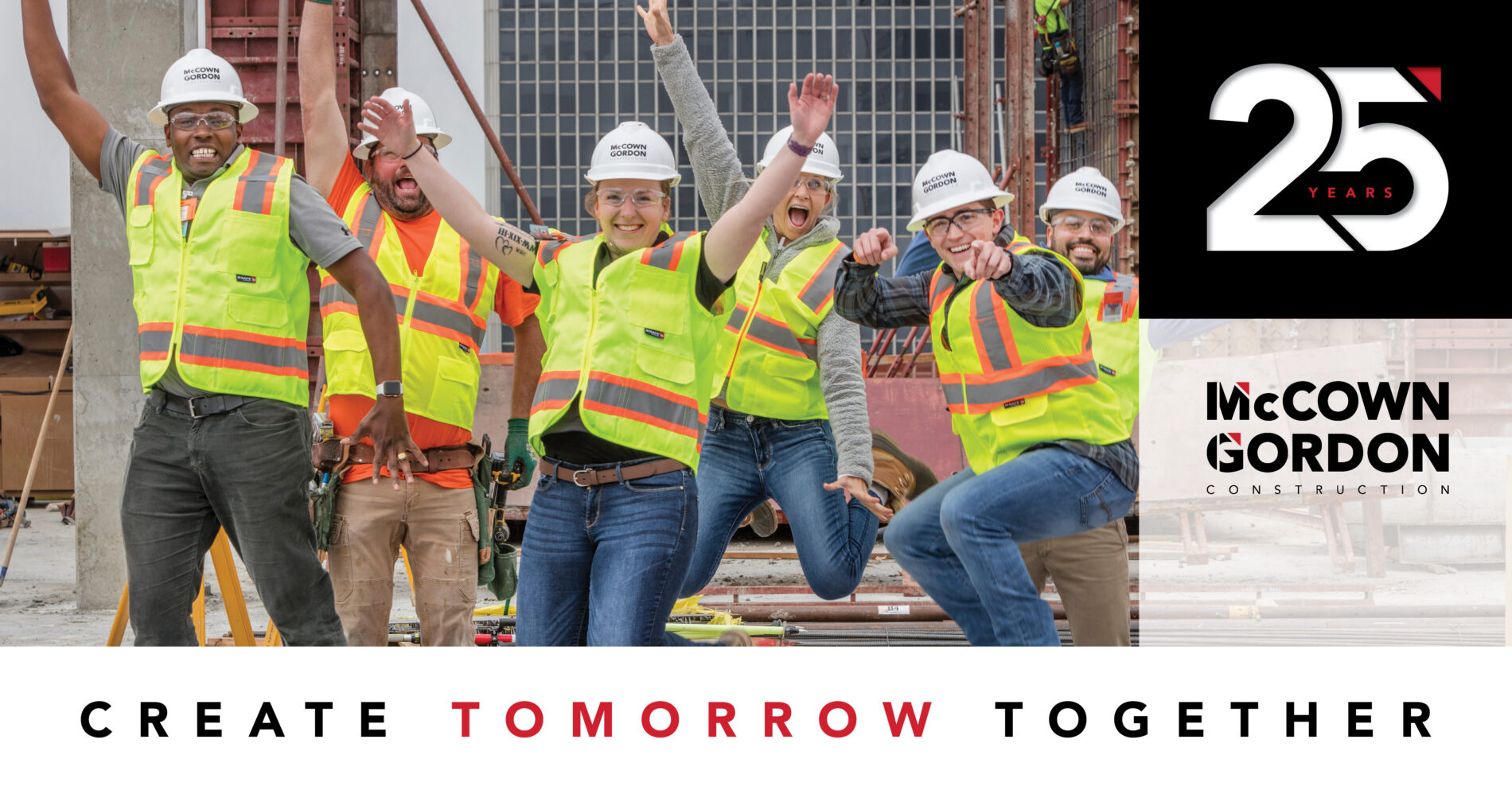Lean Construction Principles

The Benefits of Using Lean Construction Principles | Midwest Construction Experts
Every construction project includes numerous moving parts, which makes it crucial to utilize a strong organizational plan. Multiple industries have applied a lean structure to maximize value and minimize waste, and construction firms are no different.
With lean construction principles, McCownGordon Construction implements practices best suited for the project. We approach lean construction with a customer-focused lens, integrating various lean methods into our approach when they make sense for the project.
In other words, every build is unique, so we do what’s best for our Midwest clients and their projects.
What is the lean organizational structure?
The lean organizational structure began as a tool for the manufacturing industry after World War II. It’s a method that focuses on identifying needed resources, optimizing scheduling and reducing inefficiencies. The goal is to create a smooth workflow that centers around gaining the most value.
However, how lean works within manufacturing is a little different than construction. For example, auto manufacturing creates fairly uniform results with each person typically performing the same tasks throughout the day. On the other hand, construction may be a little more unpredictable since it works within a less controlled environment.
While the lean process may look different from project to project, the end goal remains the same—reducing waste and promoting continuous improvement and collaboration. At its core, lean is a toolkit to streamline the construction process and ensure all people involved stay on the same page.
How to understand value and eliminate waste
The success of lean construction principles depends on the ability to understand value. Specifically, McCownGordon structures project strategies based on the specific customer. And what the customer deems valuable goes beyond simply building a project and calling it a day.
Understanding value isn’t only about saving money, though financial value is also important. It is about recognizing why we are building a project rather than just what we are building. We strive to understand how each building helps our clients fulfill their mission and business goals, and as a result, we create long-lasting relationships with our customers because of our focus on seeing the project through the customers’ lens. We work closely with our trade partners to ensure they understand the bigger purpose of each project and the importance of their role in the larger picture, strengthening relationships across the entire team.
By bringing in stakeholders early in the construction process, we’re able to take that value and transform it into an effective plan. This ensures we not only supply what the customer wants, but also outline expectations and the best methods to create the smoothest, most cost-effective operations.
From there we can begin looking for ways to reduce waste. Keep in mind waste isn’t just defined as material waste. It can include (but isn’t limited to):
Holds in construction: Waiting to continue the construction process due to missing materials or other issues could waste time and delay the schedule, which results in extra costs.
Material transportation: If not planned correctly, materials could reach a jobsite before they are needed. Doing so could take up extra space a tight or occupied site may not have.
Improper talent utilization: Since construction projects depend on different tasks, it is important to assign the right person/team to the job. This ensures talent isn’t put to waste.
Defects: Defects include performing tasks incorrectly the first time and having to redo them, which can cause delays in the overall project timeline.
To reduce waste, McCownGordon works with our customers’ and other stakeholders to find proactive solutions. This means identifying potential problems before the actual construction process begins. As a result, we are less likely to hit unforeseen bumps once we begin building on the site.
Lean construction promotes collaboration
One of the biggest benefits of implementing lean strategies throughout a construction project is collaboration. Since lean depends on communication between all involved parties, it is important everyone remain engaged from start to finish.
We begin this process early on, starting with our collaborative design sessions. Depending on the delivery method, we will bring on trade partners earlier in the process and sit down for a thorough discussion. During this, we get to know each other, talk about the scope of the project, understand scheduling and gain insight on the budget. This is all about strategizing how we will complete the specific project.
When we bring our trade partners into the design process, they can help provide solutions before design begins. For example, when we introduce mechanical contractors during preconstruction for a select system, they can help define the system minimums required to provide them at the best price. This eliminates the idea of “designing in a vacuum” where designers don’t get actual feedback from the contractors working on the project.
At the end of the day, a collaborative environment fosters an effective project. When everyone remains actively engaged with one another, we are less likely to face avoidable missteps and miscommunication. It also allows us to supply the best outcomes for our customers, regardless of the project scope or budget.
Using lean for ownership and accountability
Since lean construction principles foster communication and collaboration, it enables everyone involved to take ownership of their work. Through detailed discussions, McCownGordon strives to plan each step ahead of time, including when we will need certain materials to complete specific milestones.
One lean method that helps connect different tasks and trade partners is pull planning.
Pull planning is a collaborative, visual representation of the project flow that uses color coding to strategically organize each project. Each color represents a trade partner; the number of colors for a specific task represents how many days that task will take to complete.
Through this process, instead of the superintendents directing what the scheduling will look like, we allow our team to estimate the duration of each task, then we build the schedule around it. As a result, the process pushes our team to become more engaged and driven to perform the work within their allotted time.
Outside of holding our team accountable and keeping them engaged, pull planning aids with material sequencing. When dealing with a tight or occupied build, all of the needed materials can’t be on site at once. That would take up a lot of space and could potentially become hazardous for workers and building occupants.
To solve this issue, pull planning highlights which materials will be needed at what time. These just-in-time deliveries enable us to have the materials on site right when we need them. So instead of having a packed space, we make sure our work area remains clean and clear with enough room to efficiently perform the task at hand.
Learn about how pull planning benefits tight or occupied jobsites.
How to begin implementing lean construction principles
When beginning to implement lean construction principles, it’s always important to base the implementation on the unique project. Treating each project exactly the same way will only hinder efforts to reduce waste and promote continuous improvement.
Since different builds and renovations require different techniques, you may not always want to use every lean principle each time. However, there is a basic foundation we follow with each project to decide which lean principle we will implement into a project.
1. Assess current work structures
Before starting the lean structure (or any aspect of it), assess the current work habits. At McCownGordon we always strive to outperform even our best work. Therefore, rather than remaining stagnant, we search for innovative solutions to create the most efficient construction process possible.
2. Optimize the workforce
The success of lean construction principles lies in the effectiveness of the people involved. Tying together trade partners with the construction manager and other personnel allows for a greater understanding of who would work best for each task. In doing so, it verifies the right talent works on the project at the right time to hit schedule milestones.
3. Give employees ownership
Instead of always telling employees and trade partners “here’s what we need done at what time,” our team opens the floor to discussion. We discuss how long a specific task will take to complete and which tasks need to be completed directly before and directly after. When you give your employees ownership, it gives them a chance to hold themselves accountable and complete their tasks on time. It also provides more insight on the specific timeline needs a single person may miss on his or her own.
4. Remain open to change
Even once we have a plan, the McCownGordon team understands things may change throughout the build process. We have the tools, expertise and mindset to pivot and switch directions when needed. That way, we can make sure we are always doing what’s best for the project—no matter what changes.
Learn more about lean construction principles with McCownGordon Construction
At McCownGordon, our team of builders and engineers maintain a customer-focused mentality, allowing us to outperform even your highest expectations. Dedicated to promoting integrity, performance and relationships, it’s our people and values that truly make the difference.
Our customers aren’t simply another project; they’re an extension of our team and community. Together, we don’t just build—we bring creative visions to life. From first thought to final nail, we deliver quality work to ensure our builds stand above the rest.
We have three regional offices around the Midwest—Kansas City, Manhattan and Wichita. Call us at 888-304-4929 or use our free online quote tool to start building today.




